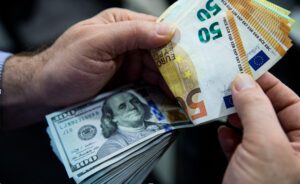
The euro, which fell below parity with the U.S. dollar in September 2022, is recovering thanks to a cooling energy market, reduced fears of recession and a hawkish stance of the European Central Bank (ECB).
The euro, which has gained almost 13% in the last 3.5 months, was also helped by a general weakening of the U.S. currency: the dollar ICE index, which rose to a 20-year high in September, has since lost about 10%.
As of 11:15 a.m. on Monday, the euro/dollar pair was trading at $1.0895, up from $1.0857 at the close of the previous session.
The Federal Reserve (Fed) raised its benchmark rate by 425 basis points last year, the fastest rate hike for a single year in four decades, the Financial Times noted. The widening of the spread between U.S. and other interest rates triggered an influx of investor funds into U.S. assets, which provided strong support for the U.S. dollar. This put additional pressure on the euro, already weakened by the rise in energy prices due to the full-scale war unleashed by Russia against Ukraine and fears of a downturn in the region’s economy.
Recently, however, trends have changed somewhat.
“For several years, there were virtually no alternatives to the dollar,” says Andreas König, head of currency markets at Amundi. – Now the capital returns to the economy outside the U.S., as there are other attractive options for investment.
In particular, the expert notes the increase of foreign capital inflow to China after the lifting of quarantine restrictions by the authorities of the country. China’s decision to abandon its policy of zero tolerance for COVID-19 provoked higher forecasts for the global economy by leading experts. This also puts pressure on the dollar, which usually strengthens in periods of macroeconomic stress.
At the same time, the outlook for Europe has recently improved, notes the FT. Gas prices have fallen due to a mild winter in the region, allowing the economy to avoid the expected deep recession.
Emerging signals of weakening inflation in the U.S. means that the U.S. Central Bank could continue to slow the pace of rate hikes. In December, the Fed increased the rate by 50 bps. – up to 4,25-4,5% per annum after its rise by 75 bp following the results of the previous four meetings.
The market expects further reduction in the Fed’s policy tightening and believes that the central bank may begin to reduce the rate in the second half of this year.
The ECB raised key interest rates by a total of 250 bps last year.
“Lower rates will eliminate a major advantage the dollar has,” said MUFG currency analyst Lee Hardman, who expects the ECB’s deposit rate to rise to 3.25 percent from 2 percent by the middle of this year. – Last year, the Fed was the leader among other global central banks in raising rates, but now the ECB has become more hawkish.
Strengthening the divergence in policy between the Fed and the ECB could lead to a rise in the euro to $ 1.12 by early 2024, said Hardman.
The expert, however, cautions against excessive optimism about the euro exchange rate against the dollar, given the continuing threat of rising energy prices that could affect the volume of European trade.
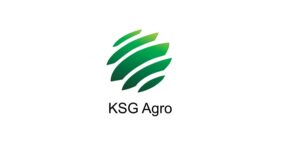
Economic results of KSG Agro holding for 2021 were confirmed by international audit company Crowe which is one of the top 10 world audit networks, the holding press-release said on Monday.
According to the report, the agrarian group has significant biological assets through its agricultural operations, which reached $39.4 million at the end of 2021, and net income from biological transformation for that year was $7.3 million.
“The pre-war year was one of the best in the history of our holding company, as witnessed by international auditors. Thanks to the successful choice of technology and weather conditions, our crop yields were the highest in the last 10 years, and in the pig segment we had a good update of the herd with Canadian Genesus genetics and achieved high dynamics of piglet litter,” – quotes the head of the holding Sergei Kasyanov.
KSG Agro noted that Polish investors are very closely monitoring the state and development of the Ukrainian companies which are listed on the Warsaw Stock Exchange. They understand that Ukraine will win the war with Russia, and therefore they pay attention to the professional evaluation of the financial and production situation of Ukrainian assets by international auditing companies, said the holding
KSG Agro reminded that according to the results of 2021, KSG Agro S.A. (Luxemburg) increased gross income by 44% compared to 2020 – from $21.3 million to $30.7 million, EBITDA by 2 times – from $6.02 million to $12.27 million, its operating profit increased by 2.5 times – from $4.3 million to $10.7 million. The profit of KSG Agro S.A. (Luxemburg), which includes all the group companies, was $20.2 million before taxes.
The vertically integrated holding KSG Agro is engaged in pig breeding as well as the production, storage, processing and sale of grain and oilseeds. Its land bank is about 21,000 hectares.
According to the agricultural holding, it is one of the top five pork producers in Ukraine.
KSG Agro in the first half of 2022 increased normalized profit by 43% compared with January-June 2021 – to $1.21 million, while its revenue decreased by 12%, to $6.02 million, and EBITDA by 17%, to $2.22 million.

The dollar is getting cheaper against the euro and the pound sterling and is getting stronger against the yen.
Signals of a weakening U.S. economy and recent comments from Federal Reserve (Fed) leaders give investors hope that the U.S. Central Bank will continue to slow the pace of raising the benchmark interest rate.
Federal Reserve Board of Governors member Christopher Waller said last Friday that the central bank has already raised the rate substantially – and “it’s time to slow down, but not stop” its hike.
“I am in favor of a 25 basis point (bps) rate hike at this point in the Fed’s upcoming meeting,” Waller said during a speech at the U.S. Council on Foreign Relations.
“We still have a long way to go to get inflation back to the 2% target, and I believe I will support further tightening of monetary policy,” Waller was quoted by Market Watch.
Federal Reserve Bank of Kansas City (FRB) President Esther George told Bloomberg TV that while inflation has slowed, it is still well above the target.
“To stay true to our price stability mandate, we need to be a little more patient,” she said.
In December, the Fed increased the rate by 50 bps. – To 4,25-4,5% per annum after its rise by 75 bp at the end of the previous four meetings, and the market is waiting for a further slowdown in policy tightening, taking into account signals of weakening inflation and economic activity in the U.S.
The European Central Bank (ECB) may have to continue raising the rate at a rate of 50 bp in both February and March, ECB Governing Council member and Dutch central bank governor Klaas Knott told the Dutch broadcaster WNL. According to Knott, the rate hike will continue in the coming months.
In a separate interview he gave to the Italian newspaper La Stampa, Knott said that it was “too early” to talk about the possibility of a slowdown in the ECB’s rate increases by the summer.
The ECB raised key interest rates by a total of 250 bps last year. Experts polled by Bloomberg expect the ECB’s deposit rate, currently at 2 percent, to eventually rise to 3.25 percent.
The ICE-calculated index showing the dollar’s dynamics against six currencies (euro, Swiss franc, yen, Canadian dollar, pound sterling and Swedish krona) lost 0.22% in trading Monday, while the broader WSJ Dollar Index lost 0.09%.
The euro/dollar pair is trading at $1.0893 as of 8:15 a.m., up from $1.0857 at market close on Friday.
The pound/dollar exchange rate rose to $1.2415 from $1.2394 the day before.
The dollar’s value against the yen is 129.92 yen against 129.5 yen in the previous session.
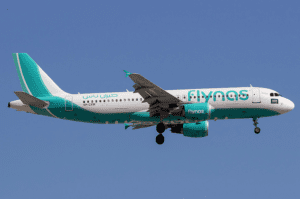
The board of directors of Saudi air carrier Flynas has approved the opening of the company’s units in two more countries as part of its plan to become the largest low-cost carrier in the Middle East and one of the world’s largest budget carriers.
Flynas, which is headquartered in Riyadh, will seek operating certificates in two other states, expecting to double its operations, the company said in a statement cited by Bloomberg. However, the company did not specify what countries it was talking about.
Saudi Arabia has invested heavily in the aviation sector as it seeks to make the economy less dependent on oil and become one of the world’s largest tourist destinations by 2030. The plan includes building a new airport in Riyadh and creating a new airline.
Flynas plans to increase its purchases of airliners to 250, and the company is considering buying wide-body aircraft, including the Boeing 787 and A350.
Flynas began flying under the Nas Air brand in 2007. The company is partly owned by Kingdom Holding, an investment company controlled by Saudi Prince Al-Waleed bin Talal.
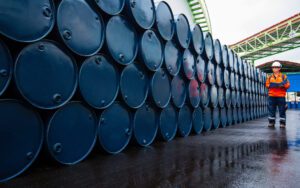
Oil prices were falling Monday amid low activity in the Asian session due to the long weekend in China in observance of the New Year according to the lunar calendar.
Hong Kong and Singapore markets are also closed.
The price of March futures for Brent crude oil on London’s ICE Futures Exchange stood at $87.35 per barrel by 7:15 a.m. Monday, up $0.28 (0.32%) from the close of the previous session. Those contracts rose $1.47 (1.7%) to $87.63 a barrel at the close of trading on Friday.
The price of WTI futures for March crude oil at electronic trades of NYMEX fell by that time by $0.23 (0.28%) to $81.41 per barrel. By closing of the previous session the cost of these contracts grew by $1.03 (1.3%) to $81.64 per barrel.
Brent gained 2.8% and WTI gained 1.8%.
Traders continue to assess the prospects for oil demand in China after the lifting of quarantine restrictions. During the holidays, which will last until the end of this week, many people travel, which should cause a significant increase in demand for fuel, and after the weekend experts expect an increase in industrial activity in China, said Bloomberg.
In addition, the market remains focused on the situation in Russia after the entry into force of the embargo on oil supplies from the country and the introduction by the G7 countries of a price ceiling in response to a full-scale war unleashed by Russia against Ukraine.
According to the International Energy Agency (IEA), the total volume of oil exports from Russia in December fell by 2.5% compared to November, to 7.8 million bpd, as crude supplies to the EU decreased.
Russian oil exports fell 6 percent last month to 4.7 million bpd, the lowest level last year. At the same time, petroleum product sales rose 3.3 percent to 3.1 million bpd.
According to the IEA forecast, by the end of the first quarter, Russian oil production will be about 1.6 mln bpd lower than before the Russian invasion of Ukraine.
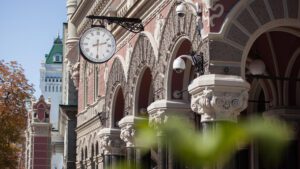
The National Bank of Ukraine on 19 January revoked the license of Standard Capital Financial Company LLC to provide factoring services on the basis of the received application, according to the regulator’s website.
In addition, six non-bank financial institutions were excluded from the State register of financial institutions due to the decision of the National Bank to cancel all of their existing licenses to provide financial services: PO “Pawnshop goods Garashov R.A. and company”, LLC “Galician financial company”, PO “Pawnshop “Primary capital” involving JSC “Logos” and company”, LLC “Solano Finance”, LLC “FC “Vilardo”, CC “Pridunavie.
Also from the State Register of financial institutions on the basis of the submitted documents was excluded LLC “FC “Standard Capital”, and on the basis of the received application – PO “Pawnshop PE “Basis” and company”.